A Cat With a Yarmulke and Other Amulets
A Zamler’s Story
This past August, book donations piled high at the Yiddish Book Center, awaiting the arrival of the new cohort of fellows. Come September, my co-bibliography fellows and I were tasked with unpacking this mountain of boxes, beginning with a behemoth of donated books endearingly referred to as the "Canada collection"—a series of donations coming largely from the Jewish Public Library in Montreal.
Donated Yiddish books often contain remnants of their reader, such as pressed flowers, colorful bookmarks, obituary clippings, or even out-of-date currency. While opening up the Montreal donation, something unexpected emerged: remnants and messages from the zamler. Zamler—meaning collector or compiler in Yiddish—is a volunteer who collects Yiddish books in place of the donator, then packs and ships the books to Amherst. Zamlers are critical to the Yiddish Book Center's mission. When Aaron Lansky began collecting Yiddish books in the 1980s, anticipating only a couple thousand at best, he needed more hands collecting than just his own. With more than one million Yiddish books in the Center's collection today, our work over the years would not have been possible without the help of our network of zamlers.
The zamler of this collection, Cesario Lavery from Montreal, is a self-taught artist, unexpectedly called to the work of zamling through serendipity and Instagram. He is among those leading a new generation in saving Yiddish books.
Cesario adorned every box in the donation with drawings of small animals, ranging from underwater seascapes to a yarmulke-covered-cat clutching a copy of I.L. Peretz. Over zoom in November, Cesario told me that the artwork served as a type of amulet for the book's journey, providing them with a safe trip to the Center. Unboxing Cesario's shipment—in all its color and exuberance—matched the emotional experience I felt opening the boxes.
The zamler of this collection, Cesario Lavery from Montreal, is a self-taught artist, unexpectedly called to the work of zamling through serendipity and Instagram.
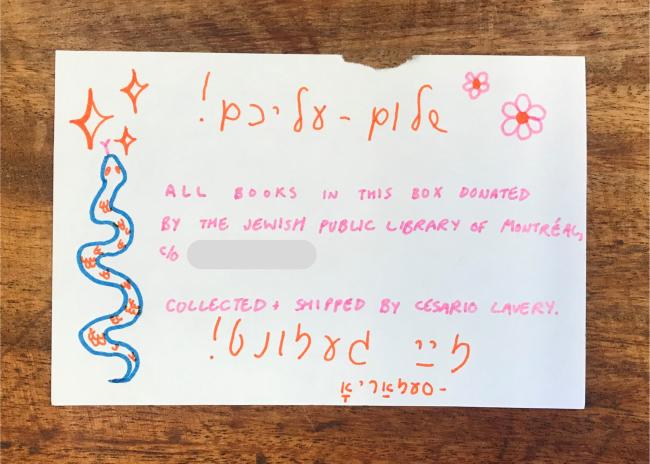
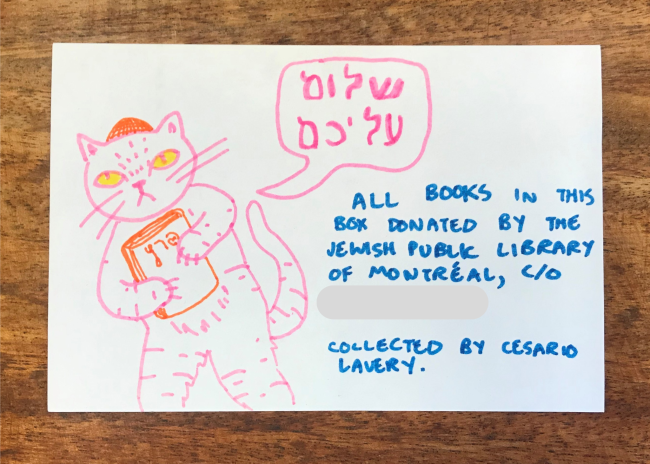
I felt compelled to reach out to Cesario because I could feel the immediacy of what he helped preserve, and we had a joint responsibility for safekeeping Yiddish and Yiddish books, brought together on either end of the zamling process. Often at the Yiddish Book Center, we talk about the Yiddish books as travelers hastily ripped off of nightstands, survivors of wars and pogroms, and witnesses to cultural, societal, and familial rupture. So it felt like a rare opportunity to be in conversation with someone who facilitated the journey of Yiddish books to our shelves, so I set up a call with Cesario to hear about his experience going into people’s homes and packing up their books.
In discussing his origins in this work, Cesario shared with me an early zamling experience where he gained a new friend and a new language. After heeding the Center’s Instagram plea for zamlers in Canada, Cesario was assigned to collect books from a woman in Montreal named Zehava Cohen. Zehava kindly asked Cesario if she could tell him about each book before bequeathing them out of her home and country. As any good zamler does, Cesario said yes. Cesario learned that Zehava was a Mizrahi Jew; Yiddish was not one of her ancestral languages, merely something she learned while living in Germany several years prior. Yet her emotional connection to these books was strong. She insisted that Yiddish and Ladino are just some of the Jewish vernaculars out there. Zehava urged Cesario to push through the initial difficulty of learning and reading a new language.
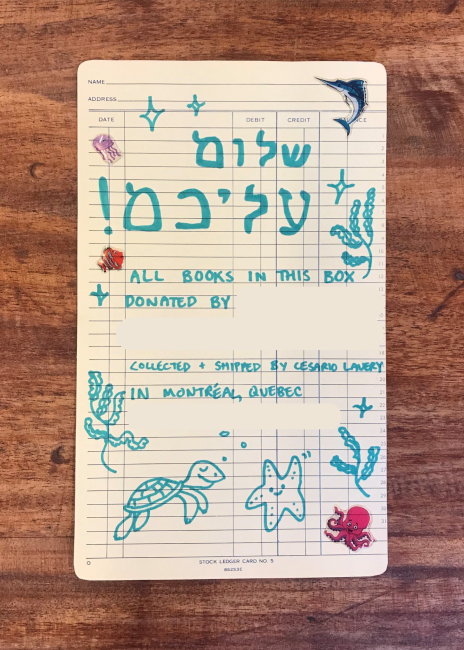
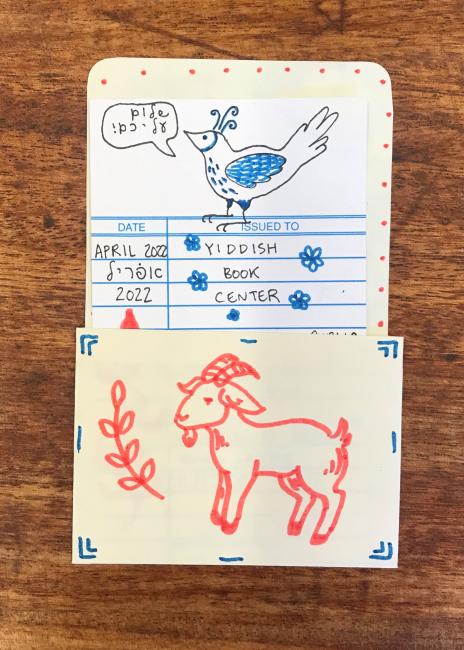
Yiddish was not one of Cesario’s heritage languages either. Zehava informed him that his ancestors would have spoken Judeo-Italian, a language he did not even know existed. A mere two weeks later, Cesario heard about the Oxford School of Rare Jewish Languages, which offers free online classes in rare Jewish languages. Cesario signed up to learn Judeo-Italian, and Zehava signed up to learn Judeo-Persian. The two keep each other accountable for this language journey they embarked on together.
In the summer of 2022, Cesario was invited by the Jewish Public Library in Montreal to begin boxing up Yiddish books that they could no longer keep. As he parsed through the books with a friend, a fellow at the library overheard that Cesario was packing up Yiddish books. She approached the two of them timidly, interjecting that she did not mean to eavesdrop but was currently organizing the library’s miniature book collection. She asked if they would mind if she shared this treasure with them. Entranced, Cesario browsed through books the size of his fingernail alongside this student preparing these books for an exhibit. The collection of miniature books belonged to Lilly Toth, a Hungarian Holocaust survivor who narrowly escaped execution by swimming across the Danube, eventually making her way to Montreal—another magical encounter with found Yiddish treasures.
It seems as though serendipity is at the core of Caesario’s zamling work, as detailed in his ongoing serialized graphic novel Der Eydes, the first volume of which tells the story of Cesario’s relationship to found treasures. On a cold night, Cesario stumbled upon a free book about Kafka that led him on a deep dive into the life of one remarkable man: Dr. Chaim Fischel Shatan, whose bookplate, marginalia, and clippings were in that book.
Three months into my fellowship, I have seen many notes, bookmarks, and newspaper clippings tucked away inside the Yiddish books I reshelve. But Cesario’s story and drawings—his amulets—continue to renew my commitment to and responsibility for Yiddish books. Yiddish books continue to generate serendipity, connection, and magic across time and place.
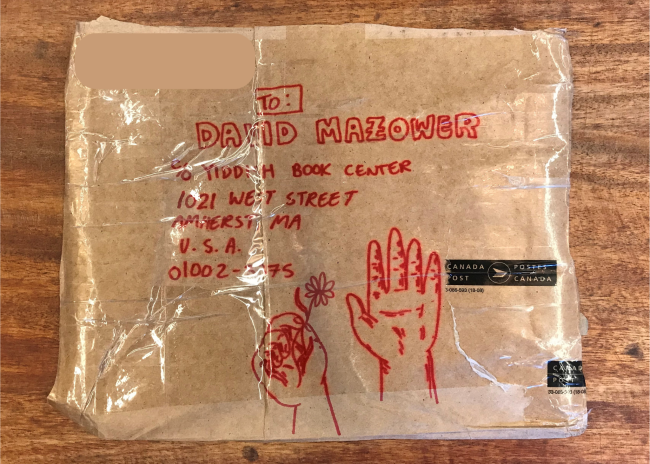
—Charlotte Apter, February 2023
Charlotte Apter—Richard S. Herman Fellow and a native of West Hartford, CT.—is a graduate of Oberlin College where she studied history, religion, and Jewish studies. In high school, Charlotte was a student at the Great Jewish Books Summer Program and in college she completed both tracks of the Steiner Summer Yiddish Program. At Oberlin, she wrote a senior thesis chronicling the political work of Clara Lemlich and Rose Schneiderman, two prominent Jewish labor organizers in the years following the Triangle Shirtwaist Factory Fire. She is delighted to be a part of the bibliography team and getting to help with some of the magic at the Yiddish Book Center this upcoming year.
